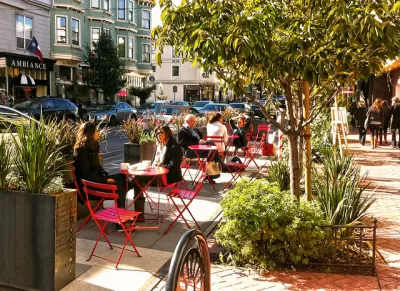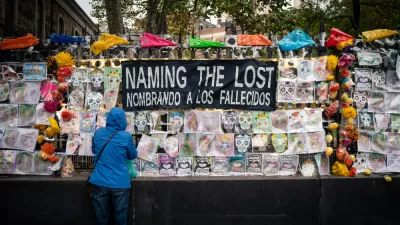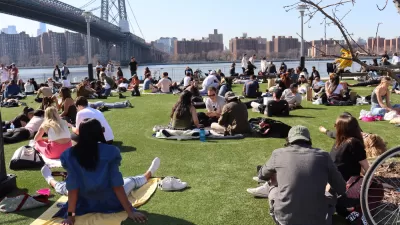The novel coronavirus has so far preyed on the most vulnerable in cities, as a result of the planning failures of the previous century. Planners today can take steps to reverse that reality, if they reclaim their historic role.

Jacob Anbinder, a PhD candidate in history at Harvard University and recommended planning Twitter follow, writes a detailed and thoroughly referenced account of the potential of the pandemic to completely remake the field of planning to effectively respond to the threats of the coronavirus.
The first evidence cited by Anbinder as an indication of the planning profession's capacity to change is the changing face of the workforce since 1973, when only 4 percent of planners were employed outside of the halls of government, to a whopping 28 percent now. The ongoing debate about the future of cities, and the coronavirus's potential to alter the evolution of urban areas, according to Anbinder, "is especially relevant in cities, given that the coronavirus not only takes advantage of the most precarious urban residents but does so by exploiting some of the worst planning failures of recent years."
But the debate, "is really a proxy for the larger debate about whether we can, and want, to resurrect the kind of interventionist government—a government of planners—that we abandoned over the course of the late twentieth century," adds Anbinder.
After detailing the housing market's pre-existing conditions, as a result of decades of obstructionary powers at the local level, not connects to the threat of out-migration from urban areas as well as the hugely disparate public health outcomes of the pandemic, Anbinder calls on planners within city government to "advocate for aggressive policy agendas to make social distancing easier."
Planners must act for forgiveness instead of permission, says Anbinder, in acting aggressively for these ends in the short term, but the long term will require a more fundamental shift:
Locally, however, progressives must cast off the risk-averse approach that has defined their urban policy since the sixties and rediscover the sort of ideology that the New Right feared, one that asserts the coronavirus and other parasites like it—including parasitic forms of state power—thrive in the absence of planning, not the presence of it. Indeed, planners themselves must reassert their profession’s essential role in a vibrant social democracy, not as facilitators of pseudo-democratic input processes but as civil servants entrusted with improving urban life.
FULL STORY: The Post-Planning Pandemic

Alabama: Trump Terminates Settlements for Black Communities Harmed By Raw Sewage
Trump deemed the landmark civil rights agreement “illegal DEI and environmental justice policy.”

Planetizen Federal Action Tracker
A weekly monitor of how Trump’s orders and actions are impacting planners and planning in America.

The 120 Year Old Tiny Home Villages That Sheltered San Francisco’s Earthquake Refugees
More than a century ago, San Francisco mobilized to house thousands of residents displaced by the 1906 earthquake. Could their strategy offer a model for the present?

Ken Jennings Launches Transit Web Series
The Jeopardy champ wants you to ride public transit.

BLM To Rescind Public Lands Rule
The change will downgrade conservation, once again putting federal land at risk for mining and other extractive uses.

Indy Neighborhood Group Builds Temporary Multi-Use Path
Community members, aided in part by funding from the city, repurposed a vehicle lane to create a protected bike and pedestrian path for the summer season.
Urban Design for Planners 1: Software Tools
This six-course series explores essential urban design concepts using open source software and equips planners with the tools they need to participate fully in the urban design process.
Planning for Universal Design
Learn the tools for implementing Universal Design in planning regulations.
Clanton & Associates, Inc.
Jessamine County Fiscal Court
Institute for Housing and Urban Development Studies (IHS)
City of Grandview
Harvard GSD Executive Education
Toledo-Lucas County Plan Commissions
Salt Lake City
NYU Wagner Graduate School of Public Service




























